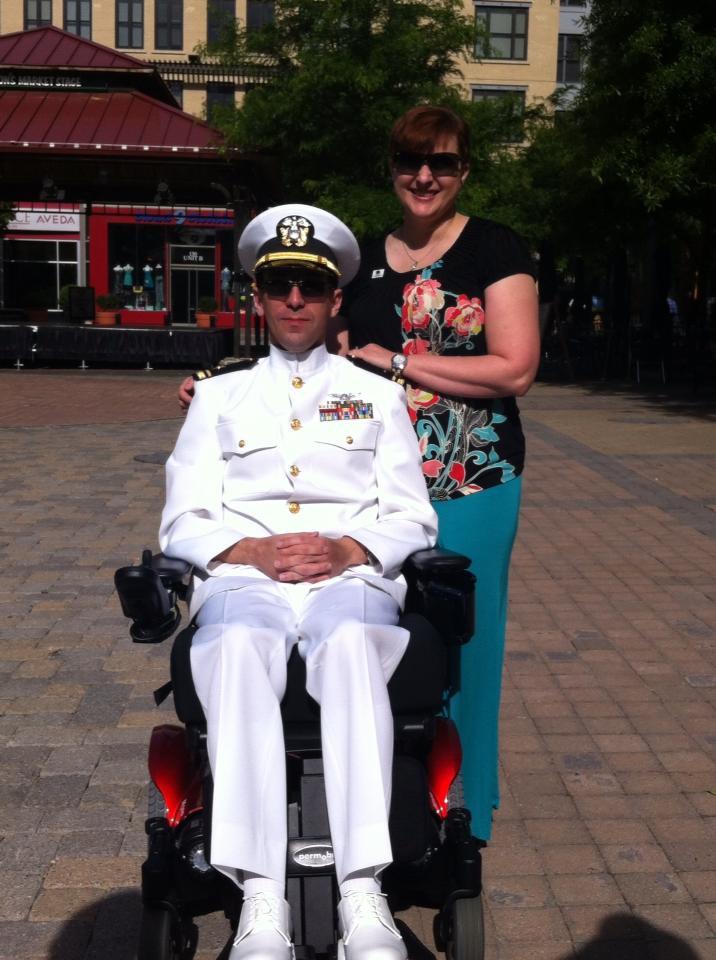US sailors sue over radiation illnesses they blame on Fukushima
The catastrophic meltdowns at the Fukushima nuclear power in March 2011 led to an international response. Among the first responders on the scene was the crew of the American aircraft carrier USS Ronald Reagan.
It was one of 25 US naval vessels that arrived bringing clean water and other humanitarian aid. But now at least 71 of the Reagan's sailors and Marines are suffering from what they say are the effects of radiation poisoning.
They are suing the Tokyo Electric Power Company (TEPCO), which they say hid the truth about just how deadly the radioactive plumes were in the air and water. One of those sailors is Lt. j.g. Steve Simmons, who says he learned of the danger when it was already too late.
“They had actually come across the intercom system of the ship letting everybody know that we had a little problem — that we had actually sucked up contaminants into the water system,” Simmons recalls. “I had already had a couple glasses of water, and I had filled up my water bottle a couple of times, and that water goes everywhere throughout that ship. It’s what they use for cooking, it’s what they have at every water fountain throughout the ship.”
Simmons even made a wisecrack about it at the time, saying if he ingested any nuclear contamination it was too late already, what’s done was done.
 Three years later, Simmons is struggling with serious health problems. "We returned from deployment in September and by November my health started to decline,” he says.
Three years later, Simmons is struggling with serious health problems. "We returned from deployment in September and by November my health started to decline,” he says.
Simmons says he blacked out while driving to work. He saw a doctor to see what was going on.
“They ran labs, couldn’t figure anything out, and from there they sent me up to Walter Reed, to the infectious disease clinic, and same thing, ran labs, couldn’t figure it out," he says. "By this time it was January 2012, and I was admitted to the hospital and I told the intern about the radiation exposure, because honestly, up until that point, I had been healthy. The intern just blew me off.
“I had unexpectedly dropped between 20 to 25 pounds. And my lymph nodes started swelling. From January to March I was running a pretty solid fever as high as 102.9. I was discharged from the hospital the first time for a so-called sinus infection, and three days later I was actually re-admitted because that’s when my lymph nodes started swelling. During that second hospitalization I was just coming out of the restroom and I stopped and my legs just buckled. And that was when the weakness started. So then I started experiencing weakness in the legs, and it just started progressing further and further,” he says.
A short time later, he'd become so weak he had to be carried up and down the stairs, he says. Simmons now spends all his time in a wheelchair. The latest health issue the naval officer has to deal with is a neurogenic bladder. “The signals aren’t getting from the brain to the bladder, so, I actually have to catheterize every four hours,” he says.
Simmons isn't the only one of the Reagan's former crew with medical problems. Paul Garner, one of the lawyers arguing their case in federal court in San Diego, says they all have similar experiences.
“Many leukemias, other forms of cancer, unremitting bleeding, both anally and vaginally, migraine headaches, hair loss — these are all young people in their twenties, by the way. And they were all basically in the same place at the same time,” he says.
The lawsuit faces twin hurdles. Not only is it extremely hard to prove environmental causality for illnesses, but there's also a web of jurisdictional complexity that involves the US military and the Japanese authorities.
The court initially dismissed the case on what it termed "political grounds," though it has allowed an amended complaint, set to be filed next month.
TEPCO's lawyers argue US courts have no jurisdiction in this matter, and also cite US Navy estimates that the crew of the Reagan wasn't exposed to dangerous levels of radiation.
But Garner says he has no doubt who's to blame for his clients' medical problems.
“The people who were operating the boiling mechanism, Tokyo Electric Power Company. They were operating a nuclear power plant, which they knew was an accident waiting to happen. So who’s responsible? The people who were operating the instrumentality are responsible. It’s a product liability situation,” Garner argues.
“This is a man-made disaster. They knew on day one that they were in the process of a LOCA, Loss of Coolant Accident, as it’s known in the industry. They knew they couldn’t cool down the core reactor number one. As we know from former Japanese Prime Minister Naoto Kan’s discussion with the foreign press recently — the core meltdown occurred within five hours of the earthquake in March 2011,” he adds.
“The Reagan and the other vessels didn’t arrive until the next afternoon. They should have been warned, just like the rest of the world should have been warned, but the people there kept it quiet. It’s a cover-up, and it’s unfortunate that so many people are cooperating with this and that mainstream media just hasn’t really paid attention to this for almost three years,” he says.
We want to hear your feedback so we can keep improving our website, theworld.org. Please fill out this quick survey and let us know your thoughts (your answers will be anonymous). Thanks for your time!